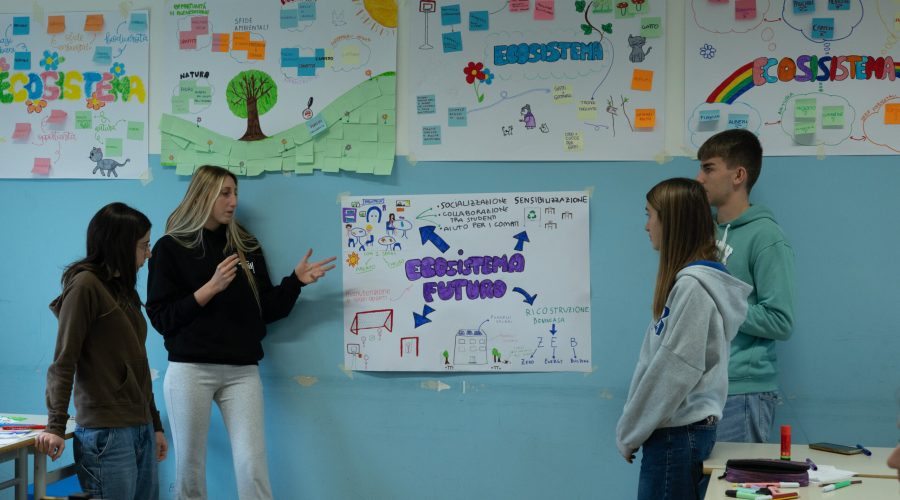Cosa trovi in questa news
Women and Girls in STEM Forum 2024
On 22 October 2024, the European Institute of Innovation & Technology (EIT) held the Women and Girls in STEM Forum 2024, bringing together experts and practitioners to explore the role of women in STEM disciplines (science, technology, engineering and mathematics) and focusing on the challenges and opportunities created by artificial intelligence (AI). Interesting data and discussions arose from the event on how AI can not only amplify gender biases, but also become an empowerment tool for women.
Women's representativeness in STEM
Despite progress in Europe and at a global level, women’s representation in STEM is still low and the statistics shared at the forum are eloquent in this regard: less than 30% of graduates in STEM subjects are women, with an even smaller presence in leadership positions in artificial intelligence. Women make up only 22% of the AI workforce, and the percentage drops further to 18% for managerial roles. However, this figure is growing, as five years ago it stood at 12%.
The message of Pia Arenkilde Hansen, General Director for Education, Youth, Sport and Culture of the European Commission, emphasised the importance of strengthening the presence of women in STEM careers, calling it a priority for the European Union.
Your ideas and talents are essential to tackling global challenges like climate change and to make sure that no group is left behind. If Europe wants to lead the global technology raise and shape the international response to climate change, we must nourish your abilities.
Pia Arenkilde Hansen
The Commission has announced strategic initiatives, such as the new STEM plan and the Girls Go Circular programme, which aim at promoting female participation in the field.
Challenges and barriers in AI for gender equality
The lack of role models and cultural biases are among the main obstacles, as Ilaria Tavaglini, EIT operation manager, notes. Biases are present in every context, from work to media representations, and are also reflected in the technologies we use.
Artificial intelligence systems can reproduce and amplify existing biases, a phenomenon that becomes particularly problematic and evident when AI is used in the creative sector or in marketing, where innovative skills are required.
Another problem concerns the use of AI at work itself, which often benefits men. Recent studies (Carvajal, Franco & Isaksson, 2024) have found that men use AI tools such as ChatGPT more frequently than women, creating a 70% productivity gap. This gap not only prevents women from benefiting from AI as an optimisation tool, but also risks relegating them to lower-paid positions or positions with lower growth prospects.
A further gap between men and women arises with regard to the approach to research and use of AI. Due to the same biases that lead women to take on the burden of care, home and family work, female professionals who use AI tend to work on specific areas such as ethics, environmental issues and health care, limiting their approach to AI to direct use rather than a general contribution to its development. In short, women remain at the margins when it comes to working on AI to enhance and develop it. Consequently, a barrier is inevitably created because the absence of women in development processes causes a lack in skills development and thus a reinforcement of existing gender gaps.
Examples of AI supporting female empowerment
During the forum, the three finalist projects of the Girls Go Circular programme, which aims to narrow the gender gap using artificial intelligence, were presented.
- On Her Care: a Finnish and Italian initiative that uses AI to reduce gender inequalities in healthcare systems. On Her Care’s mission is to improve the accuracy of diagnoses for women, in response to a 50% disparity between misdiagnoses for men and women. The AI developed by this start-up relies on global health databases to prevent patients from being excluded from appropriate treatment.
- SMEEQ: an Estonian project that uses AI to ensure equal media coverage for female athletes. Currently, women represent 40% of athletes but receive only 4% of sports media coverage. SMEEQ uses unsupervised learning techniques and data scraping to track and analyse the coverage of women in sport, with the aim of increasing the visibility of female athletes.
- EqualED: an AI-driven app that supports women’s education in the world’s most disadvantaged regions, such as Afghanistan, India and Nigeria, where girls face serious barriers to accessing education. EqualED offers customised learning paths, tailoring content to individual abilities and helping to reduce the gender education gap.
Solutions for greater inclusiveness
During the forum, experts suggested several solutions to promote gender equity in the STEM sector. One key idea was to introduce compulsory responsible data science courses at universities (an example of a course introduced at the University of Eindhoven). ‘When you teach a child how to behave in society, you also educate them about ethics,’ explained Faith Girisken, emphasising that a similar approach is needed in AI.
Furthermore, the forum emphasised the importance of promoting female role models and investing in mentorship programmes. As Veronica Stephan, an AI and human rights specialist, noted, ‘Right now we need good role models, because it is a myth that Silicon Valley innovators are still the sole rulers of technology. The presence of female role models is crucial to encourage young women to pursue careers in the STEM sector, breaking down cultural barriers and gender biases.
Resources developed by Sineglossa
Organizzazioni culturali e università possono avere un ruolo chiave nel sostenere le donne nello STEM, promuovendo iniziative di formazione e mentoring e investendo in progetti che abbiano l’obiettivo di abbattere il gender gap.
Tra le proposte sviluppate da Sineglossa in questa direzione:



